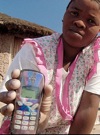Mobile phones and the digital divide
While developed markets get excited by the iPhone, N95, BlackBerry, 3G, WiMax and Android, in developing countries, most excitement centers around the proliferation of mobile phones — any phones — into poorer rural, communication-starved areas and their potential to help close the digital divide. Handset giants such as Nokia and Motorola believe that mobile devices will “close the digital divide in a way the PC never could.” Industry bodies such as the GSM Association run their own “Bridging the Digital Divide” initiative, and international development agencies such as USAID pump hundreds of millions of dollars into economic, health and educational initiatives based around mobile technology. With so many big names involved, what could possibly go wrong? […]
So, if we’re serious about using mobile to help some of the poorest members of society, how about diverting international development funding toward providing a subsidized, fully Internet-ready handset for developing markets? (It’s been tried before but lacked coordination.) Aid donors are already providing funds to the network operators, after all. In the Democratic Republic of Congo, Madagascar, Malawi, Sierra Leone and Uganda, for example, the International Finance Corporation (an arm of the World Bank) provided US$320 to Celtel to help expand and upgrade its mobile networks. Network coverage, important as it is, is only part of the equation. From the perspective of the digital divide, who’s addressing the handset issue other than companies responding to market forces (which I’ve already argued are often more fixed on price)?
Ken Banks devotes himself to the application of mobile technology for positive social and environmental change in the developing world, and has spent the last 15 years working on projects in Africa. Recently, his research resulted in the development of FrontlineSMS, a field communication system designed to empower grassroots nonprofit organizations.




